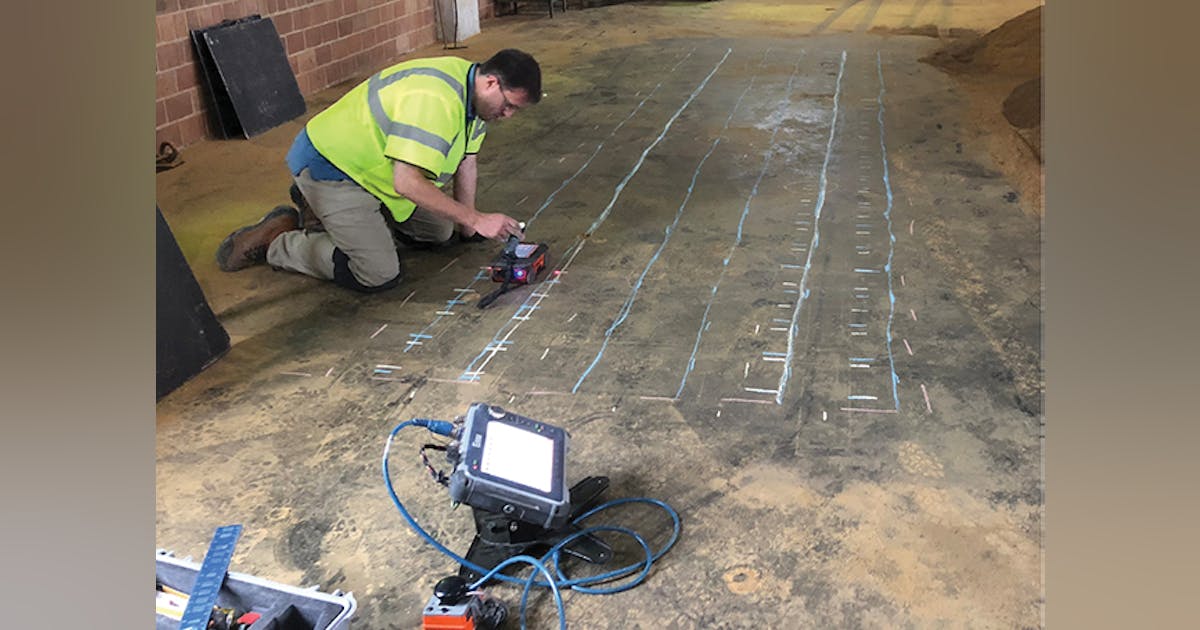Enhance Construction Safety with Expert Concrete Scanning
Past the Surface: Leveraging Advanced Concrete Scanning Techniques for Unmatched Precision and Insight
In the world of building and infrastructure upkeep, the quest for accuracy and thoroughness is incessant. Advanced concrete scanning techniques have actually emerged as essential tools in this search, using a glimpse underneath the surface to introduce a world of important insights. By using cutting-edge modern technologies, experts can discover abnormalities, examine the condition of concrete structures, and make informed choices that shape the course of tasks. The effects of these methods prolong far beyond mere surface-level assessments, assuring a deepness of accuracy and understanding that is unparalleled.
Importance of Advanced Concrete Scanning
The relevance of making use of sophisticated concrete scanning techniques exists in the unmatched precision they offer for spotting sub-surface abnormalities and making sure structural honesty. By employing sophisticated technologies such as ground-penetrating radar (GPR), electro-magnetic induction, and progressed finder imaging, construction specialists can dig beneath the surface of concrete structures with a degree of precision that much goes beyond typical inspection approaches. Concrete Scanning. These techniques enable the recognition of surprise threats like rebar deterioration, gaps, avenues, or post-tension wires that can endanger the security and security of a framework gradually
In addition, progressed concrete scanning gives invaluable understandings right into the total condition of a concrete aspect without the requirement for invasive measures, minimizing the risk of causing damage during the assessment procedure. The capability to identify the precise place and deepness of prospective problems permits for targeted repairs and maintenance, eventually extending the life-span of the framework and maximizing its performance. In essence, the significance of advanced concrete scanning can not be overstated in the world of building and facilities maintenance, where precision and dependability are vital.
Sorts Of Cutting-Edge Technologies

Abnormalities and Defect Detection

In addition to GPR, concrete scanning techniques image source like thermography and impact-echo screening are additionally efficient in discovering anomalies and defects. By leveraging these sophisticated methods, professionals can proactively address architectural problems, making sure the long life and security of concrete structures.
Assessing Concrete Problem
Exactly how can engineers precisely review the condition of concrete structures to guarantee their longevity and security? Numerous advanced concrete scanning methods are used for this purpose. Ground-penetrating radar (GPR) is typically made use of to analyze the internal structure of concrete, identifying voids, fractures, and various other abnormalities that might compromise its stamina.
Furthermore, aesthetic inspection stays a basic part of concrete condition evaluation. Designers visually take a look at the surface area for signs of deterioration, such as spalling, breaking, or discoloration. Combining non-destructive screening methods with visual assessments permits a comprehensive evaluation of concrete condition, enabling engineers to identify potential issues at an early stage and execute timely maintenance or repair work. By leveraging these advanced techniques, engineers can ensure the long-term resilience and safety of concrete structures.
Enhancing Decision-Making Processes
In the realm of infrastructure monitoring, optimizing decision-making processes is essential for making sure the efficient upkeep and long life of concrete frameworks. Boosted decision-making processes in concrete management entail using advanced scanning strategies to gather detailed information on the problem of structures. By leveraging technologies such as ground-penetrating radar and 3D imaging, stakeholders can make informed choices pertaining to support, repair, or replacement methods.
These progressed scanning methods give indispensable understandings into the interior make-up of concrete, determining possible issues such as voids, fractures, or deterioration that may not show up externally. This level of comprehensive info permits for proactive upkeep preparation, More Bonuses decreasing the risk of architectural failings and increasing the general life expectancy of concrete frameworks.
Moreover, by integrating electronic documents and evaluation devices into the decision-making process, stakeholders can track the development of concrete problems with time, enabling predictive upkeep approaches and maximizing resource allocation. Inevitably, the assimilation of advanced concrete scanning strategies boosts decision-making processes by supplying unrivaled precision, insight, and efficiency in framework monitoring.
Conclusion
In verdict, progressed concrete scanning methods use unmatched precision and insight in spotting anomalies, issues, and analyzing the condition of concrete structures. By leveraging cutting-edge modern technologies, decision-making procedures can be improved, leading to even more educated and efficient services for maintaining and fixing concrete infrastructure. These strategies play a vital function in ensuring the safety and security and durability of concrete frameworks, making them a crucial tool in the area of building and engineering.
Additionally, advanced concrete scanning gives indispensable understandings right into the overall a fantastic read problem of a concrete element without the requirement for invasive procedures, minimizing the threat of triggering damage during the assessment procedure - Concrete Scanning. Another cutting-edge innovation is 3D X-ray scanning, which provides comprehensive photos of the interior structure of concrete, supplying useful information without the demand for damaging screening. Furthermore, Concrete Cover Meters are used to determine the density of concrete cover over reinforcement bars properly. Improved decision-making processes in concrete monitoring include utilizing innovative scanning techniques to gather comprehensive information on the problem of structures.In conclusion, advanced concrete scanning methods offer unequaled precision and insight in discovering abnormalities, issues, and assessing the condition of concrete frameworks